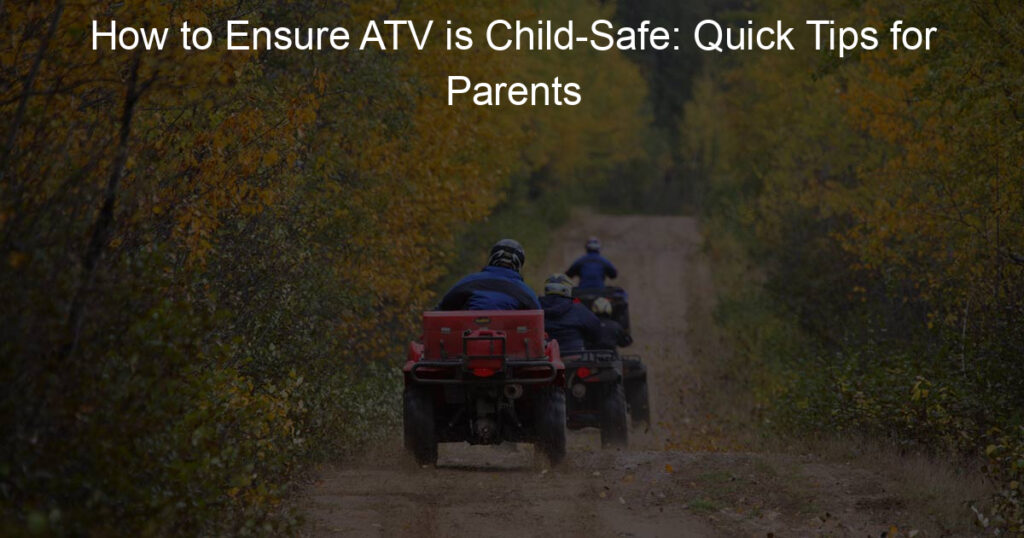As an ATV enthusiast, I know the joy and excitement that comes with riding these incredible off-road vehicles.
But, when it comes to allowing our children to ride, we need to ensure ATV is child-safe.
This article is here to guide you on how to make sure your ATV is child-safe and help you make informed decisions based on your child’s age and abilities.
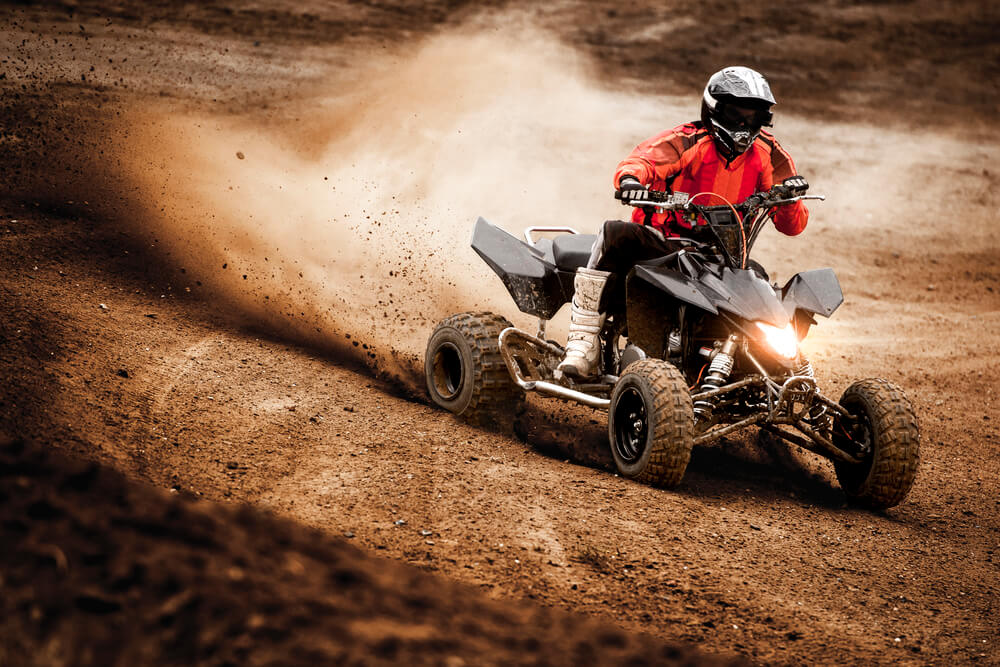
The first thing that any responsible parent should consider is understanding the basics of ATV and choosing the right model for your child. The good news is that there are ATVs specifically designed for kids, which prioritize safety and ease of use.
Additionally, it is essential to educate both yourself and your child on ATV safety, including proper training, safety gear, and preparation before each ride.
Key Takeaways
- Understand the basics of ATVs and choose the correct model for your child
- Prioritize comprehensive safety training and preparation for you and your child
- Invest in essential safety gear and know the rules for ATV riding on public land
Ensure ATV is Child-Safe
As an ATV enthusiast, I know the importance of ensuring that these fun machines are also safe for children to use. In this section, I’ll cover the basics of ATVs and their components so you have a clear understanding of what makes them tick and how to ensure they’re child-safe.
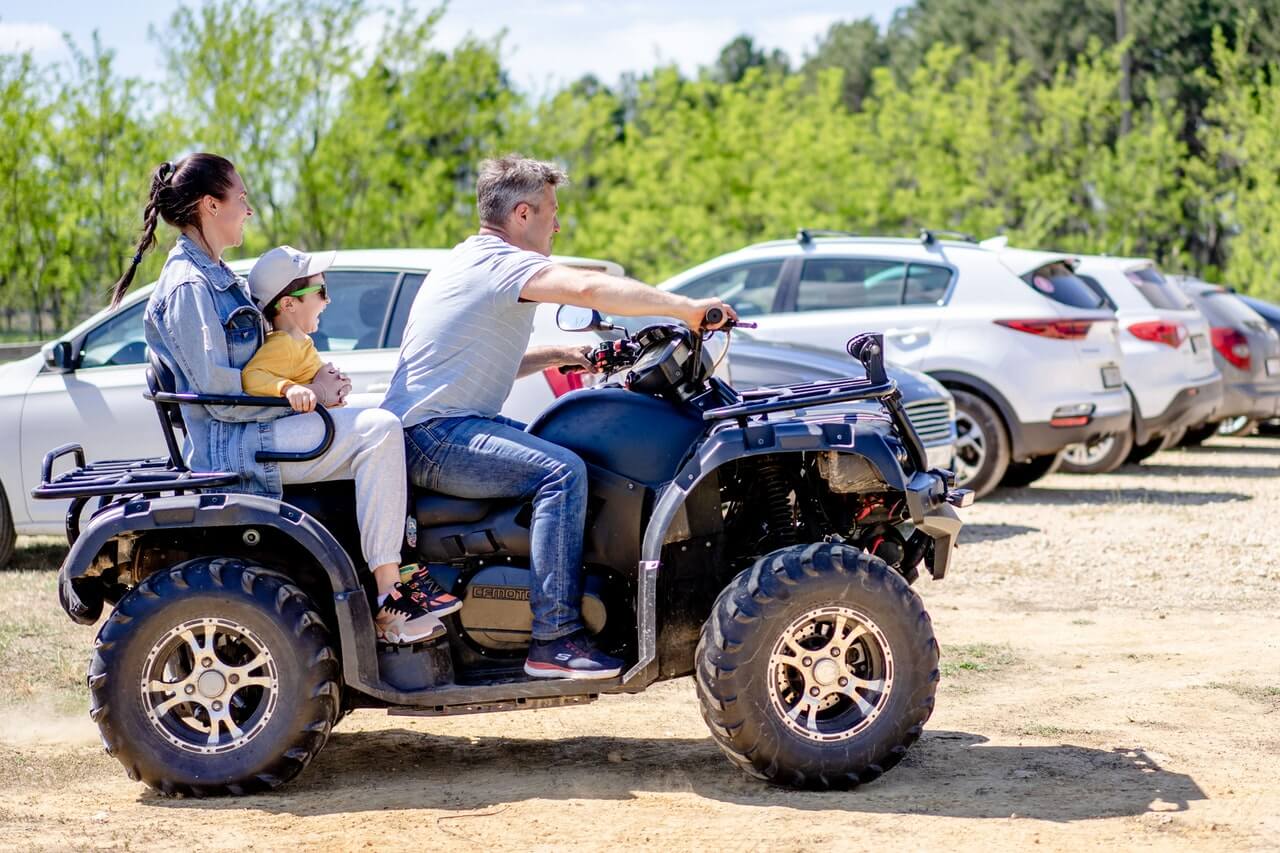
What is an ATV
An ATV (All-Terrain Vehicle) is a small, motorized vehicle designed for off-road use. They come in various sizes and are meant for both adults and children. ATVs are popular for outdoor activities such as trail riding, hunting, or simply enjoying the outdoors.
They usually have four tires, which gives them stability and the ability to traverse different types of terrain.
Understanding ATV Components
Knowing the essential components of an ATV is crucial for ensuring your child’s safety.
Here are the main parts to consider:
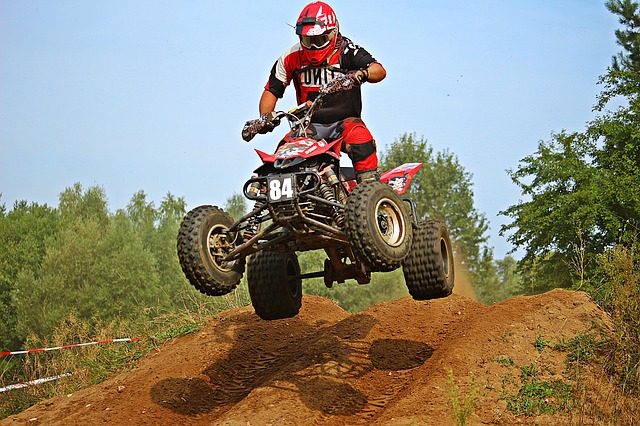
- Engine: The engine is the heart of the ATV. Most ATVs have either a two-stroke or a four-stroke engine. You’ll want to familiarize yourself with the specific engine type of your child’s ATV and follow the manufacturer’s recommended maintenance guidelines.
- Controls: ATVs typically have handlebars for steering, a throttle to control speed, brakes to stop or slow down, and a clutch for shifting gears (if it’s a manual transmission). Learning how each control works will help both you and your child operate the ATV safely.
- Brakes: Brakes are essential for any vehicle, and ATVs are no exception. There are two types of brakes commonly found on ATVs: disc and drum brakes. Ensure your child’s ATV has a functioning brake system and teach them how to use them properly.
- Tires: ATV tires are designed specifically for off-road use and provide traction on various terrains. Always ensure that your child’s ATV has the correct tire pressure, and routinely inspect the tires for any damages or wear.
- Battery: The battery of an ATV powers the electrical components, such as the ignition and lights. Maintaining a healthy battery is important, so routinely check and charge the battery, as recommended by the manufacturer.
Understanding the basics and components of an ATV is an essential step in ensuring your child’s safety while they enjoy their off-road adventures.
Choosing the Right ATV for Your Child
Child Appropriate ATVs
When it comes to selecting an ATV for my child, I always prioritize their safety. It’s important to choose an ATV that is appropriately sized and designed for kids.
Many manufacturers offer ATVs designed specifically for children, so I make sure to review the different options available.
These child-specific ATVs often have:
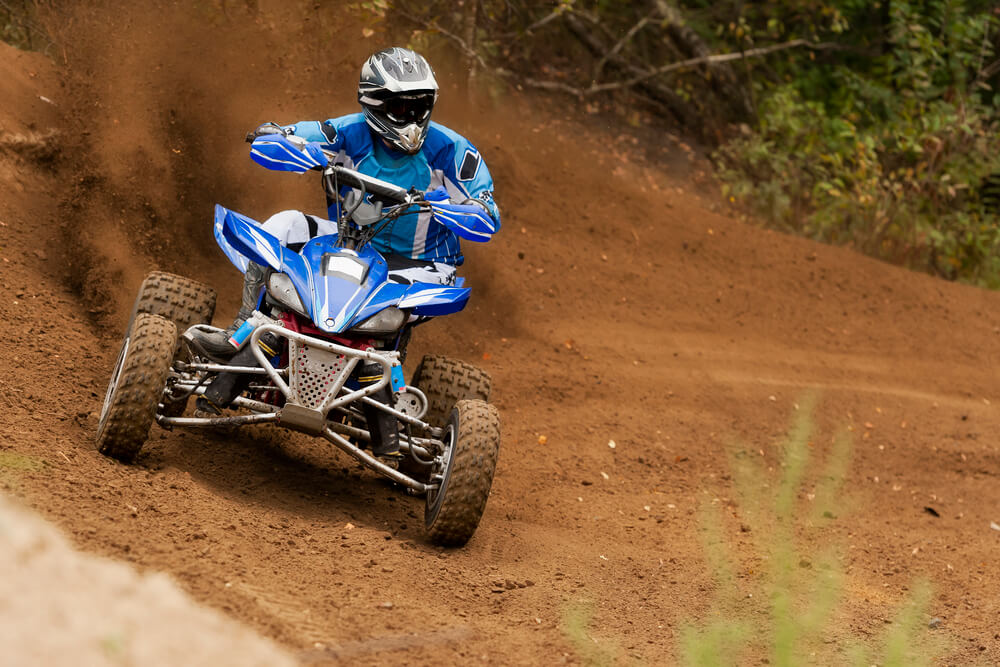
- Limited engine size and power
- Lower top speeds
- Easier-to-use controls and a more manageable riding experience
I also consider the added safety features these ATVs offer, such as:
- Tether cords to remotely shut off the engine
- Throttle limiters to control the maximum speed
- Wider wheelbases to enhance stability
By selecting a child-appropriate ATV, I can ensure that my child will have a safer and more enjoyable riding experience tailored to their capabilities.
Understanding Age-Appropriate ATV Models
Before making a decision, I always try to understand the age restrictions and recommended maturity levels for each ATV model. Each ATV is designed to cater to different age groups and skill levels.
Here’s a general guideline I find helpful when assessing which ATV model is appropriate for my child:
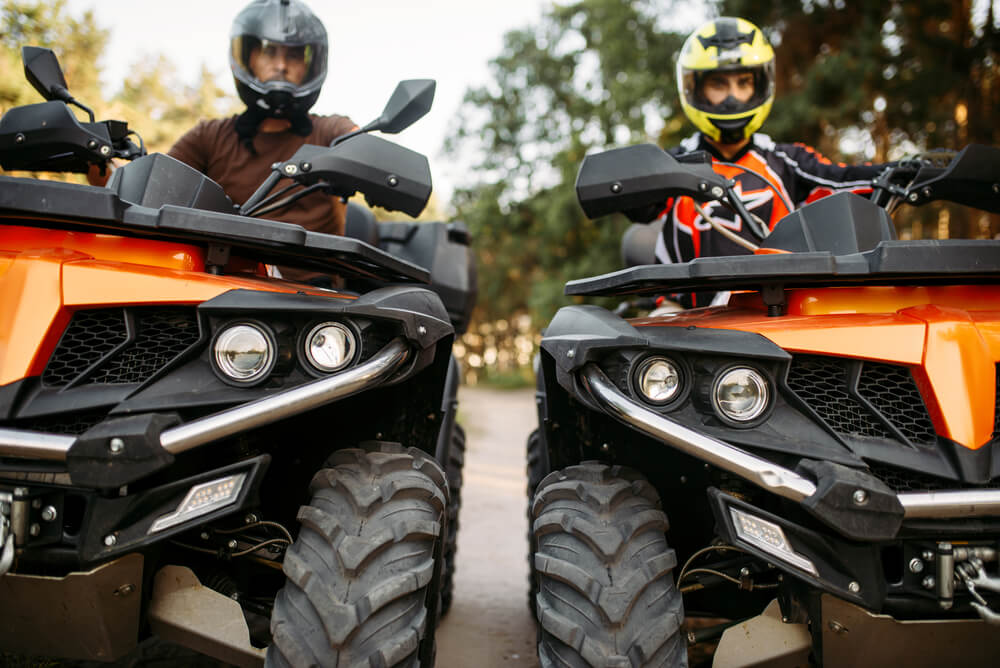
- Ages 6 and under 50cc or smaller ATVs designed for young children, with minimal speed and power. These models focus on safety features and ease of control.
- Ages 7 to 10: 70cc to 90cc ATVs with slightly increased power and additional control features. These models still prioritize child safety and cater to the developing skills of this age group.
- Ages 11 to 15: 90cc to 125cc ATVs offering more advanced features, power, and a higher level of control. These models are suitable for teenagers with some experience in ATV riding and the maturity to handle increased speed.
When choosing the right ATV for my child, I take their age, riding experience, and maturity into account.
Being mindful of these factors can select a suitable ATV that will provide a safe and enjoyable experience for my children as they delve into the world of ATV riding.
Importance of ATV Safety Training
Enrolment in ATV RiderCourse
I cannot stress enough the importance of enrolling your child in an ATV safety training program. The ATV Safety Institute’s ATV RiderCourse is a great place to start. This course covers essential safety topics, such as proper riding techniques, protective gear, and pre-ride inspection.
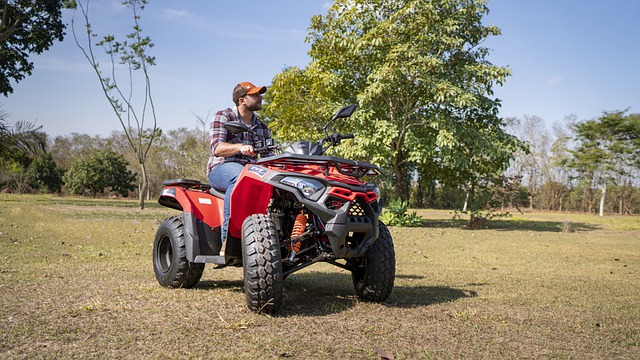
I highly recommend this course because it teaches practical and comprehensive knowledge that’s crucial for every young rider. Plus, most states require ATV safety training for kids under the age of 16, so it’s not only helpful but often necessary.
Hands-on Training vs. Online Training
Hands-on training is undoubtedly the best method for learning ATV safety. Nevertheless, if your options are limited, online courses can still be beneficial. While the ATV Safety Institute’s RiderCourse provides hands-on training, there are online courses available for those who cannot access an in-person course.
I believe that combining online lessons with supervised practice sessions can help build the necessary skills for child-safe ATV riding.
Remember to always prioritize safety and to be patient – Rome wasn’t built in a day, and neither are safe ATV riders!

Essential Safety Gear for ATV Riding
Use of Helmet and Goggles
I always make sure to put on my helmet and goggles before riding my ATV.
Helmets are essential safety gear since they protect my head from potential impacts and hazards. I choose to wear a certified helmet that meets or exceeds industry standards.
Goggles, on the other hand, shield my eyes from dirt, dust, and debris while riding. Clear visibility is crucial for a safe and enjoyable ride.
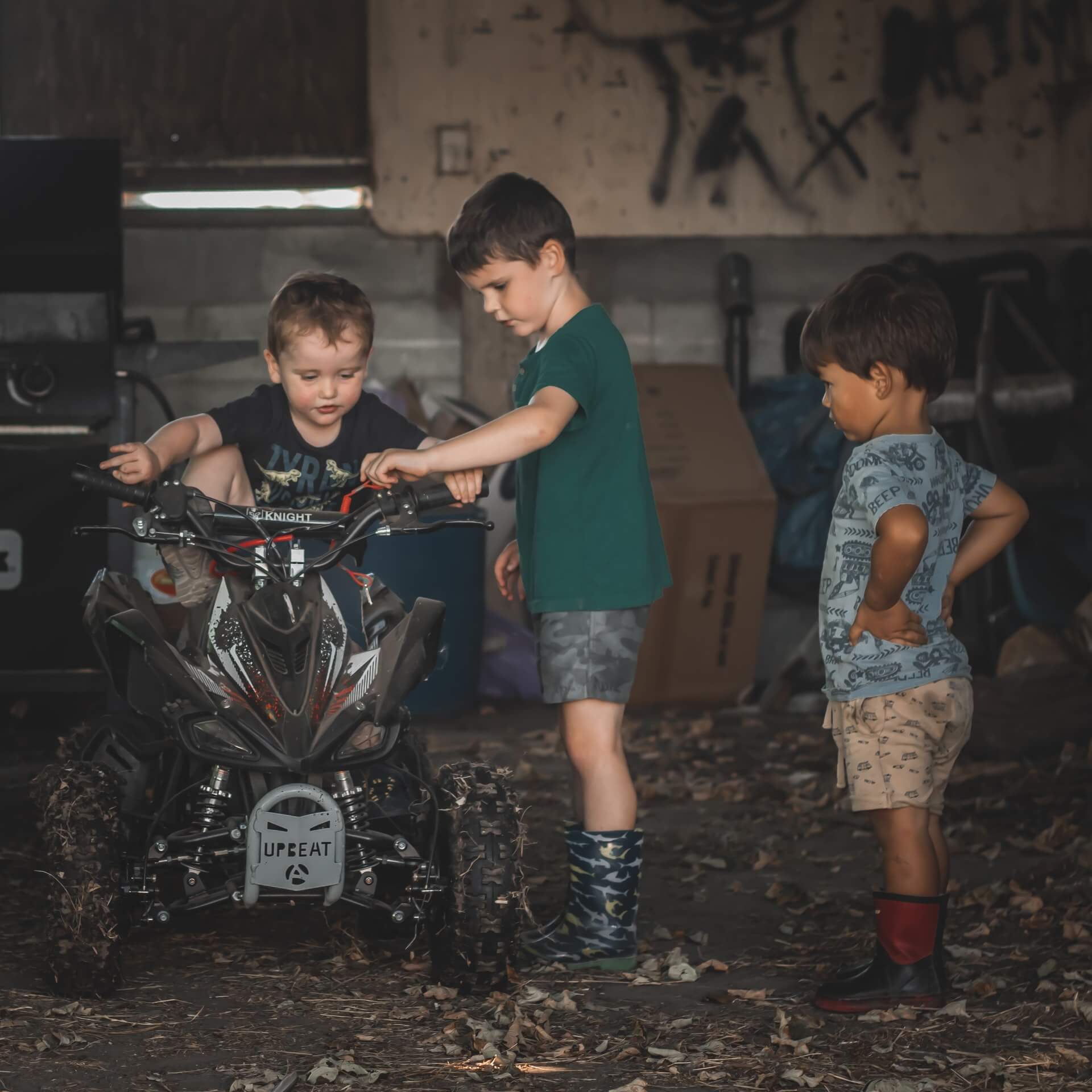
Importance of Long Pants and Long-Sleeved Shirts
When I go for an ATV ride, I prefer to wear long pants and long-sleeved shirts as part of my safety equipment. These garments shield my skin from scratches, cuts, and abrasions that I might encounter on the trails.
Also, long sleeves and pants provide me with protection against sunburn, insects, and other outdoor elements. Choosing durable and breathable materials like thick denim or protective fabric is my go-to choice for long pants and shirts.
Choosing the Right Gloves and Boots
Lastly, I always pay attention to my choice of gloves and boots when prepping for an ATV trip. Gloves not only protect my hands from blisters and chafing but also offer a better grip on the handlebars.
I opt for well-fitted gloves made from durable materials, as these provide a good balance between protection and comfort.
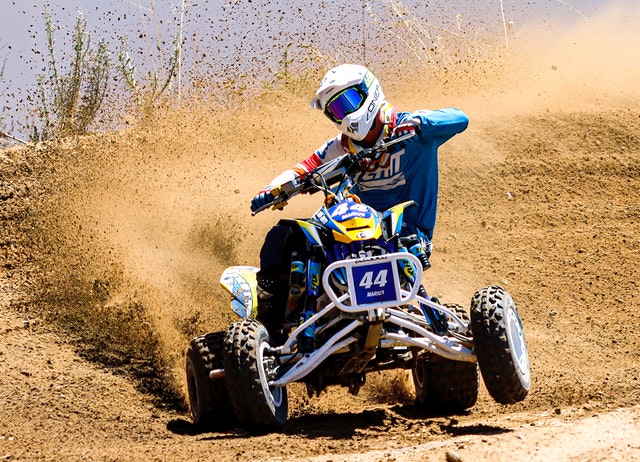
As for boots, I choose sturdy, ankle-supporting footwear that protects my feet and gives me adequate traction for various terrains. Slip-resistant soles and protective materials like leather or heavy-duty synthetic textiles make perfect choices for ATV riding boots.
I believe that wearing the appropriate safety gear greatly contributes to a safe and enjoyable ATV experience.
Preparation Before ATV Riding
Checking the ATV
Before letting my child ride an ATV, I always make sure the vehicle is in good working condition. First, I inspect the tires for proper inflation and tread depth. Then, I check the brakes to ensure they’re functioning correctly.

A quick look at the suspension system helps me verify that it’s not damaged and working as intended.
Moving on to the engine, I examine the oil and coolant levels. A low oil level can cause engine damage, while insufficient coolant can result in overheating. Additionally, I inspect the battery to ensure it’s securely fastened and the terminals are clean and corrosion-free.
Understanding Legalities and Rules
As a responsible ATV owner, I make sure I’m familiar with the laws and regulations surrounding ATV usage. In many places, it’s illegal to ride ATVs on public roads, so I check the local Department of Transportation rules to stay within legal bounds.
This information can typically be found on their website or by contacting the department directly.
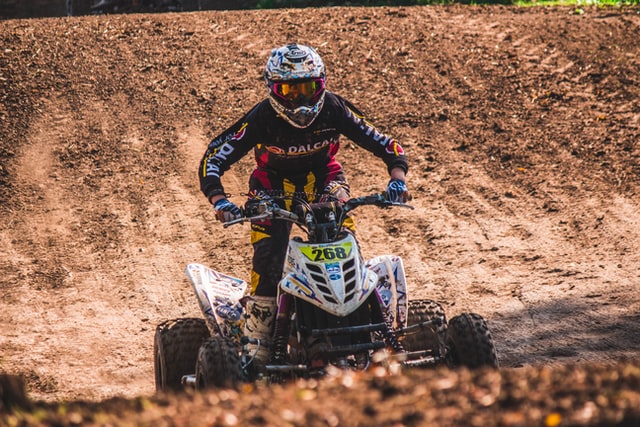
When planning to ride on public lands, I research the rules for the specific area, as they may vary. For example, some public lands require an ATV registration or permit, while others prohibit ATVs altogether.
Furthermore, I remind my child to always wear a helmet and other safety gear, as it’s often a legal requirement and, more importantly, helps ensure their safety.
I also choose age-appropriate and size-appropriate ATVs, as laws often regulate the type of vehicle a child can legally operate.
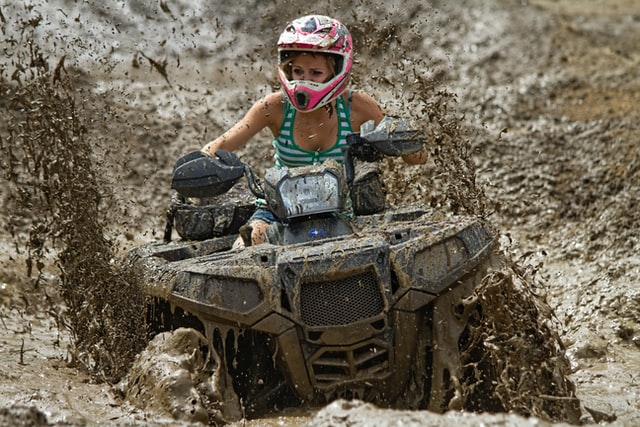
Managing Risks During ATV Riding
As an outdoor enthusiast, I want to share my insight on how to minimize risks and ensure your child’s safety during ATV riding.
After all, creating a secure environment for our kids while they enjoy recreation is our top priority.
Avoiding Common Mistakes
First, let’s discuss how to avoid common mistakes that often lead to injuries.
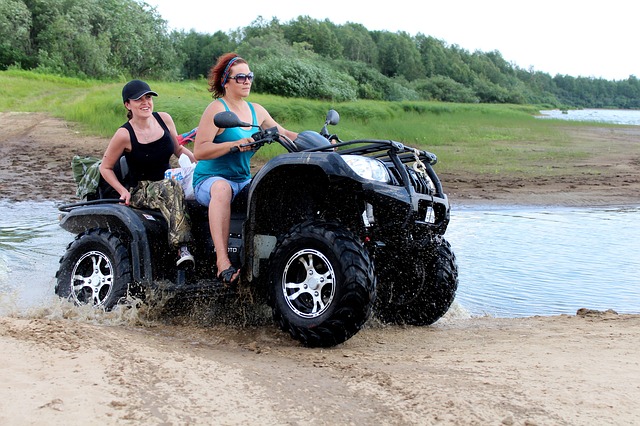
I’ve found a few helpful tips that can make a huge difference:
- Choose an appropriate ATV: Ensure the ATV matches your child’s age, size, and skill level. This helps avoid overpowering your child with a machine that’s too strong for them to handle.
- Make sure they wear proper safety gear: Helmets, gloves, goggles, long-sleeved shirts, and over-the-ankle boots are essential for protecting your kids from potential hazards.
- Provide adult supervision: When children are on the ATV, it’s crucial that an experienced adult rider is present to guide and assist them.
- Teach your kids about safe riding: Education is key, so discuss with your child the importance of staying within designated riding areas, avoiding rough terrain, and maintaining a steady speed.
- Avoid passengers: Unless the ATV is specifically designed to carry a passenger, it’s best to avoid it. Passengers can negatively affect the ATV’s balance and potentially cause a crash.
Riding With Maturity and Responsibility
Another important aspect is encouraging maturity and responsibility when riding ATVs.
This means:
- Staying focused: Make sure your child understands the importance of staying alert and keeping their eyes on the trail ahead.
- Following the rules: Teach your child to adhere to local laws, guidelines, and posted signs in their riding area.
- Avoiding drugs and alcohol: It’s crucial to emphasize the dangers of using drugs or alcohol before or during ATV riding. Explain that these substances impair judgment and can make it easier to lose control of their ATV.
In conclusion, as a caring parent who loves outdoor activities, I believe that with proper education, preparation, and supervision, we can help children have fun and stay safe on ATVs.
Understanding ATV Riding on Public Land
When it comes to riding ATVs on public land, I always make sure to familiarize myself with local rules and regulations. Each region has specific guidelines to ensure the safety of riders, as well as preserving the natural environment.
It’s important to check with local land management agencies, such as the Bureau of Land Management or the U.S. Forest Service, for the most up-to-date information on where you can ride your ATV.
Avoiding off-limits areas is essential, not just to respect the law but also to protect wildlife habitats and ecosystems. Riding in these sensitive areas could not only harm the environment but also lead to hefty fines or legal troubles.
Always follow the designated ATV trails, and don’t venture off into prohibited areas.
Before heading out, I also recommend checking the weather conditions and preparing my ATV accordingly. Poor weather could make the trails slippery or dangerous, so it’s best to stay on top of any changes and react accordingly.
Taking the time to perform routine maintenance and necessary safety checks on my ATV ensures a safe and enjoyable time on public land.
Finally, to keep my riding adventures child-safe, I make sure to adjust the ATV’s speed governor to match my child’s skill level and teach them about the importance of responsible riding.
I encourage helmet use and other safety gear and always keep an eye on them to ensure they’re following the rules and staying in control.
By following these tips, I ensure that my ATV adventures on public land are safe and enjoyable for everyone involved while also respecting the land and local regulations.
Keep these guidelines in mind for a successful and fun riding experience.
Conclusion
Reiteration of Safety Tips
When it comes to ATV safety for children, I believe it’s crucial to always follow the recommended safety tips and ensure proper gear is used.
My key takeaways for keeping your child safe on an ATV include:
- Supervision: Make sure you are always keeping an eye on your child while they’re on the ATV.
- Age-appropriate vehicle: Choose a model that fits your child’s age and size for a comfortable and safe riding experience.
- Proper gear: Invest in high-quality protective equipment such as helmets, gloves, and boots.
- Speed control: Teach your child to maintain a reasonable speed and avoid taking sharp turns at high speeds.
I highly recommend taking the time to research and understand the proper ATV safety guidelines. Following these tips will not only protect your child but also ensure enjoyable, worry-free ATV adventures. Remember, safety first, and happy trails!
Frequently Asked Questions
What age should a child be to ride an ATV?
It’s important for our kids to be of an appropriate age before allowing them to ride an ATV. The American Academy of Pediatrics (AAP) recommends that children be at least 16 years old before operating ATVs with engine sizes greater than 90cc.
For smaller ATVs with engine sizes between 70cc and 90cc, kids should be at least 12 years old. However, always supervise your child and make sure they can manage the vehicle.
What safety gear should kids wear while riding an ATV?
Safety gear is crucial to ensure a child’s well-being while riding an ATV. Essentials include a DOT-compliant helmet, goggles, gloves, long-sleeved shirt, long pants, over-the-ankle boots, and a chest protector.
This gear can minimize injury risks in case of an accident, so don’t compromise on any of these items.
How can I choose the right size ATV for my child?
Choosing the right size ATV for your child is important for their safety and enjoyment. First, check the manufacturer’s recommended age and weight limits for the specific model you’re considering.
Next, have your child sit on several ATVs to gauge their comfort and ability to reach the controls. Ensure their feet are flat on the footrests and their hands can easily grip the handlebars.
What safety features should I look for in an ATV for kids?
When choosing an ATV for kids, consider the following safety features: a speed limiter or governor, a remote engine shutoff, and an automatic transmission. These features help enhance control and allow parents to remotely monitor their child during an ATV ride, providing extra peace of mind.
How can I teach my child to ride an ATV safely?
Teaching your child to ride an ATV safely begins with communication. Explain the importance of proper safety gear and vehicle maintenance. Encourage them to practice in a controlled environment before heading out on more challenging terrains.
Teach them to check for potential hazards, maintain a safe distance from other riders, and stay within their skill level. Enrolling your child in an ATV safety course can also be valuable for both instruction and hands-on learning.
Are there any rules or restrictions regarding children and ATVs?
Rules and regulations regarding children and ATVs may vary depending on your location. Always check local rules and guidelines for age restrictions, vehicle requirements, and safety equipment.
Further, inform your child about potential penalties for breaking these rules, like fines or vehicle confiscation. Following local guidelines will help ensure your child can enjoy a safe and responsible ATV experience.

